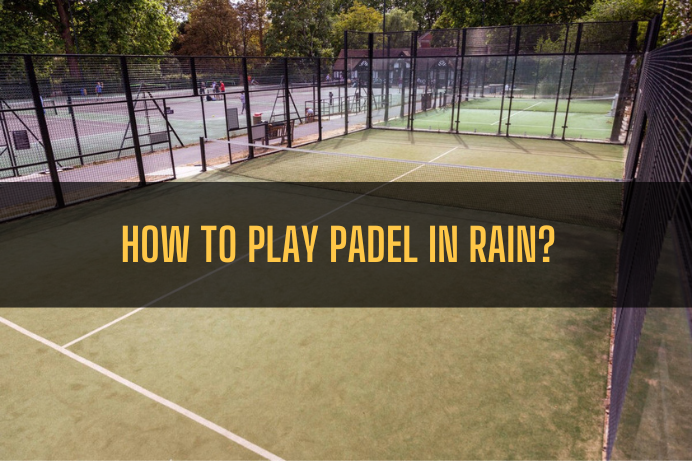As winter approaches and rain becomes a regular occurrence, the state of the padel courts will be affected. While playing in light rain may still be possible, avoiding playing on a soaked court altogether is advisable.
To adjust to the challenges of playing in wet weather, consider the following factors:
- In terms of preparation, wear warm and preferably waterproof clothing. Wearing a cap can also help protect your eyes from rain, improving visibility.
- It is important to have a longer warmup than usual if it is cold and rainy.
- Ensure you have shoes with excellent grip, as the court surface will be more slippery, increasing the risk of slips and injuries.
When playing in wet conditions, remember that the ball will become heavier and lose its bounce. This is a crucial aspect to keep in mind. Consequently, executing powerful shots and hitting the ball out of the court will be more challenging, known as “sacarla x3” and “sacarla por 4” in Spanish. The same applies when attempting to return the ball to your side of the court after a smash, referred to as “traerla a tu lado.”
Proper Grip For Shots
When the ball and racket are wet, achieving a proper grip for shots is impossible. This means that using topspin or underspin/backspin/slice techniques is out of the question. Instead, focus on hitting plain shots to maximize power transfer and give the ball as much direction as possible in these low-grip conditions.
Ball Bouncing
Another issue we will face is the ball bouncing off the wet walls. Once again, the lack of grip on the walls creates an unpredictable scenario. Normally, a medium to low-powered shot would dramatically fall off the wall, leaving you expecting a ball that never reaches your racket. To overcome this issue, flex your knees and prepare your racket lower to catch balls after irregular rebounds.
If the opponent hits the ball forcefully, you may experience a rebound off the wall that is even faster than you are accustomed to in dry conditions. This is something else to keep in mind. Using the walls under wet conditions is quite challenging, so it might be better to avoid relying on them altogether and play a form of mini-tennis instead.
Walls Support
Since the walls offer little support and can be menacing, it is advisable to refrain from defensive play and always strive to stay in an attacking position near the net. Focus on volleying firmly and deep into the opponent’s side to force them to play off the walls. As we have observed, the walls are highly unpredictable, increasing the likelihood of the opponent making mistakes. The same approach applies to serving. In these conditions, it is best to direct fewer serves toward the T and the opponent’s feet and more toward the corner, where they will be forced to deal with the wall’s rebound. Returning such services will be highly challenging. Additionally, serving with low power towards the T while applying underspin can be difficult to return, as the ball will bounce very low, making it challenging for the opponent.
Hitting The Ball
What do you think about hitting the ball against the wall on our side to return it? In Padel, this move is called “contrapared,” it’s quite common. When the walls are wet, and the balls are heavy, hitting them with a softer and more controlled touch is important. The effect will be greatly exaggerated if you hit a back wall shot as you normally would in dry conditions. So, it’s best to be nice and gentle.
One of the best shots to use on rainy courts is the “Globo.” It’s important to position ourselves in the attacking position because defending on wet courts could be better. Hitting “globos” can help us gain the attacking position and force our rivals to become defensive.
For those who understand Spanish, a helpful video explains how to play Padel on wet courts.
Of course, it’s best to avoid playing on wet padel courts if possible. Even if it means paying extra for indoor or covered courts, you’ll enjoy your games much more in dry conditions. If it has rained before your match, but the sky is now clear,
it’s a good idea to dry off the walls so that you’ll have an off-wall bounce similar to dry conditions (although the ball will still be wet and affect the bounce). If you can’t avoid playing in wet conditions, use the above tips to your advantage and gain an edge over your opponents.




